SLAU902A September 2023 – January 2024
- 1
- Description
- Get Started
- Features
- Applications
- 6
- 1Evaluation Module Overview
-
2Hardware
- 2.1 Setup
- 2.2 AC-MB Settings
- 2.3
TAx5x12EVM-K Hardware Settings
- 2.3.1 TAx5x12 EVM Input Hardware Settings
- 2.3.2 TAx5x12 EVM Output Hardware Settings
- 2.3.3 TAx5x12 Headset Connection
- 2.3.4 GPIO1 Hardware Configurations
- 2.3.5 GPIO2 Hardware Configurations
- 2.3.6 GPI1 Hardware Configurations
- 2.3.7 GPO1 Hardware Configurations
- 2.3.8 I2C Address Hardware Configurations
- 2.3.9 Audio Serial Interface Hardware Configurations
-
3Software
- 3.1 Software Description
- 3.2 PurePath Console 3 Installation
- 3.3
TAx5x12 EVM GUI
- 3.3.1 Software Overview
- 3.3.2 Configuration View
- 3.3.3 End System Integration View
- 3.3.4 Register Map View
- 3.3.5 Preset Configuration
- 3.3.6 I2C Monitor View
- 3.4 Configuration Examples
- 3.5 System Overview
- 4Hardware Design Files
- 5Additional Information
- 6References
- 7Revision History
2.3.1 TAx5x12 EVM Input Hardware Settings
The TAx5x12 evaluation module has several input configuration options and offers extensive flexibility to allow the user to evaluate the device across multiple operation modes. The different operation modes are highlighted in this section.
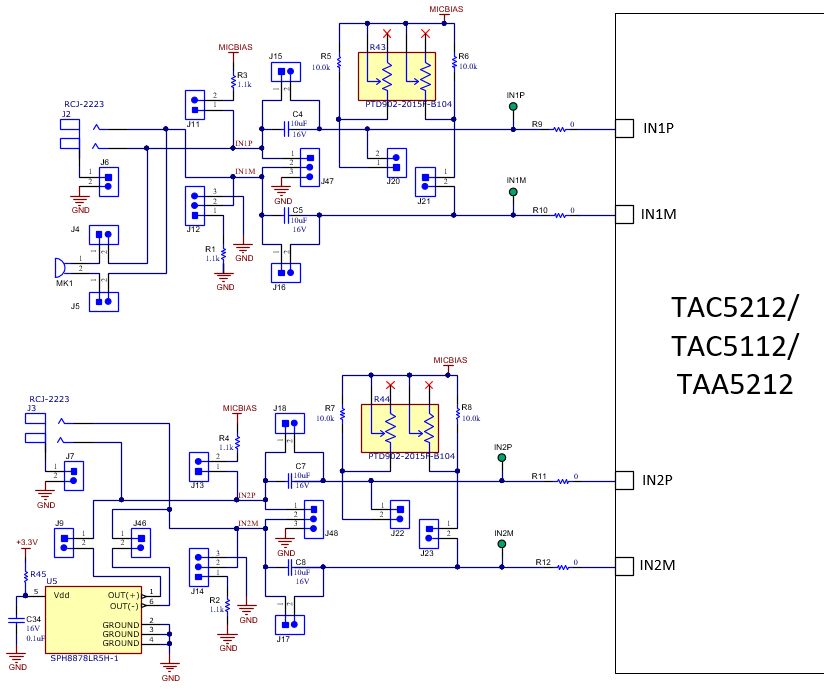 Figure 2-8 TAC5212 and TAC5112 EVM Input Architecture for Channel 1 and 2
Figure 2-8 TAC5212 and TAC5112 EVM Input Architecture for Channel 1 and 2The IN1 and IN2 input architecture allows these two channels to be quickly configured to support any of the supported operation modes. The INxP and INxM pins of the TAx5x12 can optionally connect to onboard microphones for quick evaluation of a microphone in AC- or DC-coupled modes. Jumper configuration details can be found in Table 3-2.
For mono devices, there's an option to connect unused inputs to ground though header J52 and J53 and for output jumper header J61 and J62. These jumpers are not populated by default.
For TAD5212 EVM, the input components are not populated.
| Input Terminal | Input Mode | Installed Jumpers | Uninstalled Jumpers | Input Swing | Topology | Register Setting |
|---|---|---|---|---|---|---|
| IN1 | LINE-IN Differential, AC-coupled | J8 | J4, J5, J6, J11, J12, J15, J16, J20, J21 | 2 VRMS | 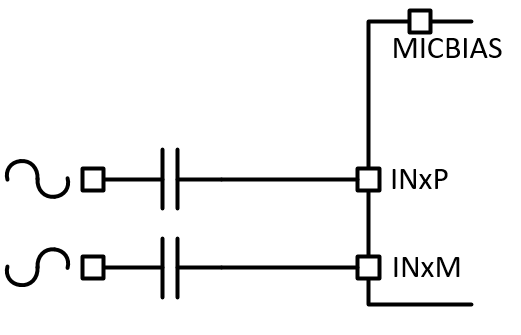 | B0_P0_R80, B0_P1_R115 |
| LINE-IN Single-ended, AC-coupled | J6, J8, J12 (2-3) | J4, J5, J11, J15, J16, J20, J21 | 1 VRMS | 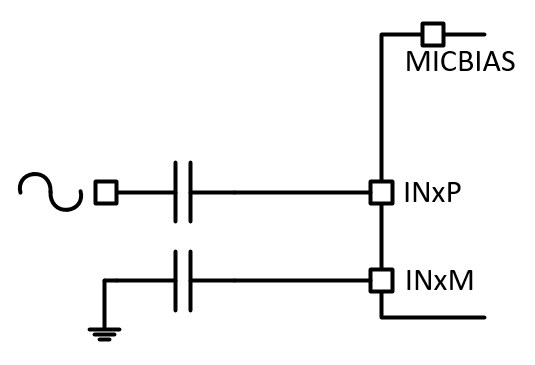 | B0_P0_R80, B0_P1_R115 | |
| LINE-IN Differential, DC-coupled | J15, J16 | J4, J5, J6, J11, J12, J20, J21, J8 (DUT MICBIAS is not used) | 4 VRMS | 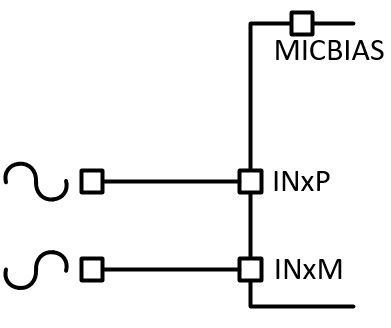 | B0_P0_R80 | |
| LINE-IN Single-ended, DC-coupled | J6, J12 (2-3), J15, J16 | J4, J5, J11, J20, J21, J8 (DUT MICBIAS is not used) | 2 VRMS | 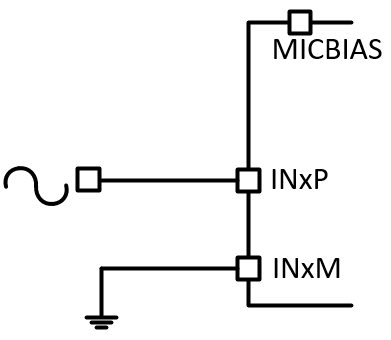 | B0_P0_R80 | |
| On-board Electret Condenser Microphone (ECM) Differential, AC-coupled | J4, J5, J8, J11, J12 (1-2) | J6, J15, J16, J20, J21 | Refer to data sheet | 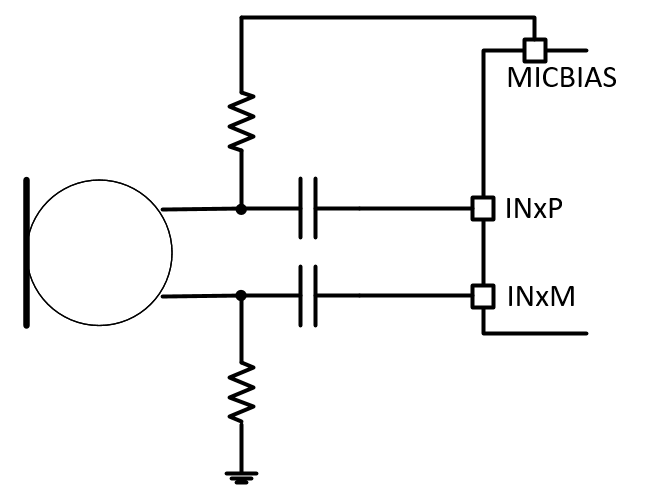 | B0_P0_R80, B0_P1_R115 | |
| On-board Electret Condenser Microphone (ECM) Single-ended, AC-coupled | J4, J5, J8, J11, J12 (2-3) | J6, J15, J16, J20, J21 | Refer to data sheet | 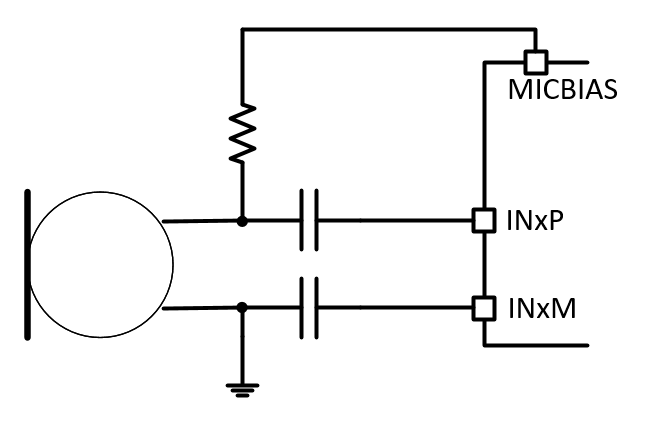 | B0_P0_R80, B0_P1_R115 | |
| On-board Electret Condenser Microphone (ECM) Differential, DC-coupled | J4, J5, J8, J11, J12 (1-2), J15, J16 | J6, J20, J21 | Refer to data sheet | 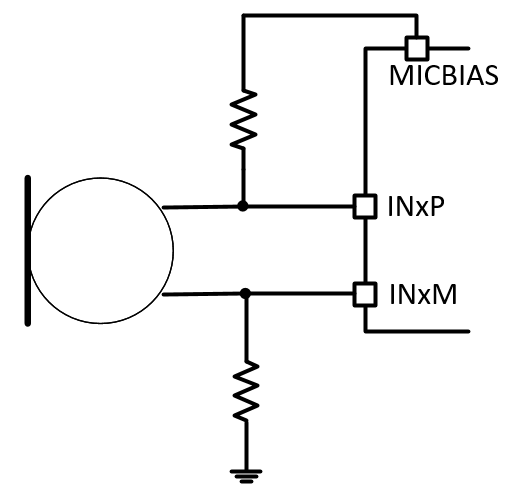 | B0_P0_R80, B0_P1_R115 | |
| On-board Electret Condenser Microphone (ECM) Single-ended, DC-coupled | J4, J5, J8, J11, J12 (2-3), J15, J16 | J6, J20, J21 | Refer to data sheet | 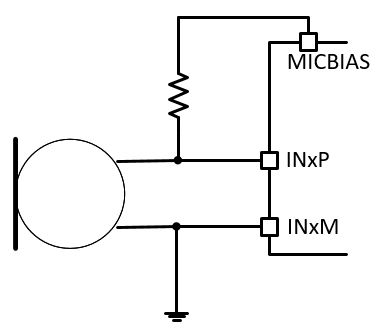 | B0_P0_R80, B0_P1_R115 | |
| IN2 | LINE-IN Differential, AC-coupled | J8 | J7, J9, J13, J14, J17, J18, J22, J23, J46 | 2 VRMS |  | B0_P0_R85, B0_P1_R115 |
| LINE-IN Single-ended, AC-coupled | J7, J8, J14 (2-3) | J9, J13, J17, J18, J22, J23, J46 | 1 VRMS |  | B0_P0_R85, B0_P1_R115 | |
| LINE-IN Differential, DC-coupled | J17, J18 | J7, J9, J13, J14, J22, J23, J46, J8 (DUT MICBIAS is not used) | 4 VRMS |  | B0_P0_R80 | |
| LINE-IN Single-ended, DC-coupled | J7, J14 (2-3), J17, J18 | J9, J13, J22, J23, J46, J8 (DUT MICBIAS is not used) | 2 VRMS |  | B0_P0_R80 | |
| On-board Analog MEMS microphone, AC-coupled | J8, J9, J46 | J7, J13, J14, J17, J18, J22, J23 | Refer to data sheet | 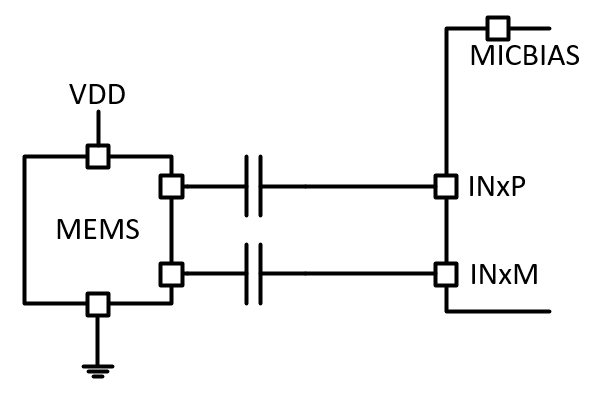 | B0_P0_R85, B0_P1_R115 | |
| On-board Analog MEMS microphone, DC-coupled | J9, J17, J18, J46 | J7, J13, J14, J22, J23, J8 (DUT MICBIAS is not used) | Refer to data sheet | 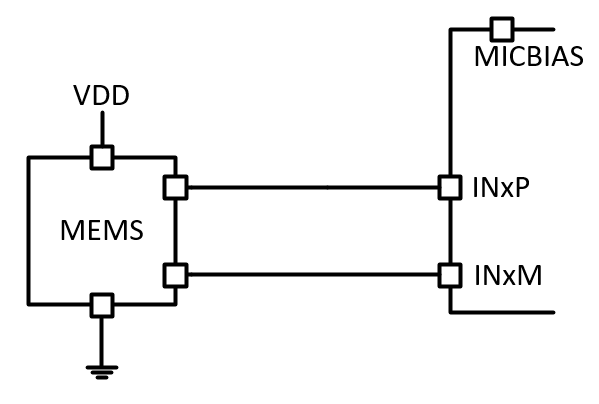 | B0_P0_R85, B0_P1_R115 |